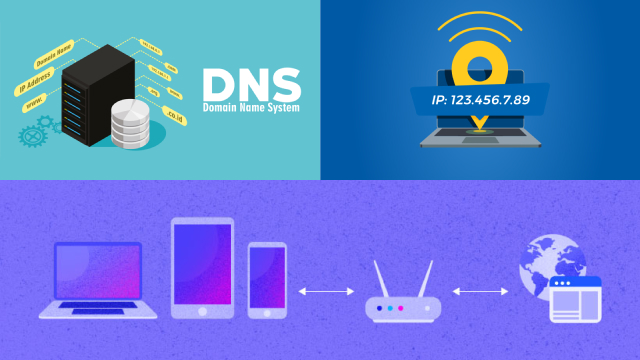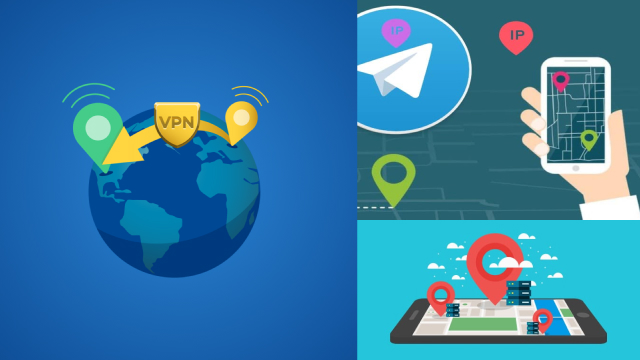Introduction to IP Addresses: What They Are and How They Work
An IP address, short for Internet Protocol address, is a unique numerical identifier assigned to every device connected to the internet. IP addresses enable devices to communicate with each other across the internet, allowing information to be sent and received.
IP addresses come in two versions: IPv4 and IPv6. IPv4 addresses consist of 32 bits and are in the format of four sets of numbers separated by dots. However, due to the rapid expansion of the internet, IPv4 addresses have almost run out, and IPv6 addresses, consisting of 128 bits, have been introduced to provide a larger address space.
IP addresses are assigned by Internet Service Providers (ISPs) to their customers, who can either have a static or dynamic IP address. Static IP addresses remain the same every time a device connects to the internet, while dynamic IP addresses change every time a device connects.
Overall, IP addresses are a fundamental part of how the internet works, allowing devices to communicate and connect with each other seamlessly.
Types of IP Addresses: Public and Private
There are two main types of IP addresses: public and private. Public IP addresses are assigned by Internet Service Providers (ISPs) and are used to identify devices on the internet. They are unique and can be accessed by any device connected to the internet. Websites, email servers, and other internet-facing devices use public IP addresses to communicate with each other.
In contrast, private IP addresses are used to identify devices within a private network, such as a home or office network. These addresses are not accessible from the internet and are used for internal communication between devices on the same network. Private IP addresses are typically assigned by a router within the network, and devices can communicate with each other using these addresses without any need for access to the internet.
Understanding the difference between public and private IP addresses is crucial for network administrators and anyone setting up a home network. By designating which devices have public or private IP addresses, administrators can ensure that devices within a network can communicate with each other securely and efficiently.
How IP Addresses Are Assigned: Static and Dynamic Addressing
IP addresses can be assigned to devices using two methods: static addressing and dynamic addressing. Static addressing involves manually assigning a fixed IP address to a device, which remains the same each time the device connects to the network. This method is often used for servers, printers, or other devices that require a consistent address for other devices to access them.
On the other hand, dynamic addressing involves the automatic assignment of IP addresses to devices by a server, such as a DHCP (Dynamic Host Configuration Protocol) server. When a device connects to the network, the server assigns it an available IP address from a pool of addresses. This method is commonly used for devices such as laptops or smartphones that connect to different networks.
Dynamic addressing is more flexible than static addressing, as it allows devices to join and leave a network without manual configuration of IP addresses. It also prevents IP address conflicts that can occur when multiple devices are assigned the same static IP address. However, static addressing can provide more stability and control in certain situations, such as in server environments.
The Role of DNS in IP Addressing: Resolving Domain Names to IP Addresses
The Domain Name System (DNS) plays a critical role in IP addressing by translating domain names into IP addresses that devices can use to communicate on the internet. DNS acts as a phonebook for the internet, mapping human-readable domain names (such as google.com) to IP addresses (such as 172.217.6.110).
When a user enters a domain name in their web browser, the browser sends a request to a DNS server to resolve the domain name into an IP address. The DNS server checks its database for the IP address associated with the domain name and returns it to the browser, allowing the browser to connect to the website.
DNS servers are distributed around the world, and there are several layers of servers that work together to provide efficient and reliable domain name resolution. DNS caching is also used to speed up the process by storing recently accessed domain names and their corresponding IP addresses for quick retrieval.
Overall, DNS plays a critical role in IP addressing by enabling devices to communicate with each other using human-readable domain names, making it easier for users to access and navigate the internet.
IP Addressing and Network Security: Firewall Rules, Access Control Lists, and IP Spoofing
IP addressing is closely related to network security, as it is a critical component of securing a network against unauthorized access and other security threats. Firewalls, access control lists (ACLs), and IP spoofing are all related to IP addressing and network security.
Firewalls are network security devices that monitor and control incoming and outgoing network traffic based on predefined security rules. These rules can include allowing or blocking traffic based on IP addresses, protocols, or ports. By controlling network traffic, firewalls can prevent unauthorized access to a network and protect against security threats.
Access control lists (ACLs) are used to define network traffic policies for routers and switches. They can be used to permit or deny traffic based on IP addresses, protocols, or ports, and can help to prevent unauthorized access and network attacks.
IP spoofing is a technique used by attackers to falsify the source IP address of a packet to hide their identity or to impersonate another device on the network. This can be used to launch a variety of attacks, including denial-of-service attacks, man-in-the-middle attacks, and other types of network attacks.
IP Addressing and Geolocation: Tracing IP Addresses to Physical Locations
IP addressing can be used to trace the physical location of a device connected to the internet. This process is known as geolocation and involves mapping an IP address to a physical location on the Earth’s surface.
Geolocation is used for a variety of purposes, including marketing, fraud prevention, and law enforcement. It can help businesses target customers based on their location, prevent fraudulent transactions by identifying suspicious IP addresses, and locate suspects in criminal investigations.
Geolocation works by using databases that map IP addresses to physical locations. These databases are created by collecting and analyzing data from various sources, including ISPs, GPS devices, and Wi-Fi access points.
IP Addressing and Internet Governance: Regional Internet Registries and IP Address Allocation
IP addressing is a critical component of internet governance, as it involves the allocation and management of IP addresses across the internet. Regional Internet Registries (RIRs) are responsible for allocating IP addresses to internet service providers (ISPs) and other organizations within their respective regions.
There are five RIRs worldwide, each responsible for a specific region: Africa, Asia-Pacific, Europe, Latin America and the Caribbean, and North America. These organizations work together through the Number Resource Organization (NRO) to ensure that IP address allocation is managed in a fair and efficient manner.
RIRs use a hierarchical system for IP address allocation, starting with the allocation of large blocks of IP addresses to internet backbone providers and then allocating smaller blocks of addresses to ISPs and other organizations. This system helps to ensure that IP addresses are allocated efficiently and that there is no wastage of valuable resources.
Conclusion: Understanding and Managing IP Addresses for a Secure and Connected World
In conclusion, understanding and managing IP addresses is essential for building and maintaining a secure and connected world. IP addresses serve as the unique identifiers for devices connected to the internet and enable communication between them.
Effective IP addressing involves the allocation, management, and security of IP addresses, including the use of firewalls, access control lists, and other security measures to protect against unauthorized access and network attacks.
In addition, geolocation and internet governance play critical roles in IP addressing, enabling the tracing of physical locations and the allocation of IP addresses in a fair and efficient manner.
As the world becomes increasingly connected, the importance of effective IP addressing will only continue to grow. By staying informed and up-to-date on IP addressing and related security measures, individuals and organizations can ensure that they are able to leverage the power of the internet while remaining secure and protected.




